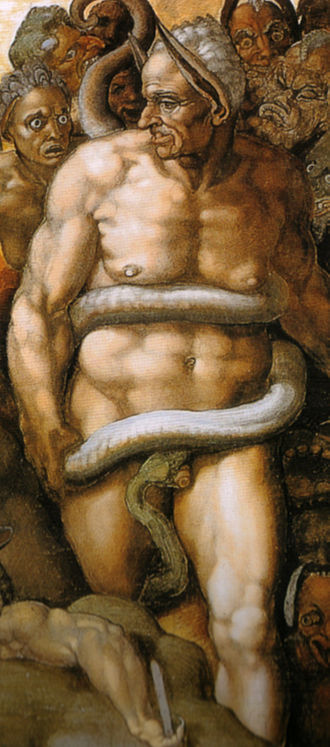Neolithic Wisdom Symbols and Sound Frequences of Balkan Barberians 6,000 BC
Sunday 30 June 2019 at 2:08 pm
Neolithic European wisdom, symbols and Sound Frequences found in 21 divine Sounds within our Languages
Around one hundred years ago, at the Nuzi site of northern Babylon, an egged shaped envelope with forty nine pebbles inscribed with Cuneiform inscription describing the herd of goats and lambs, was found. We now only have the record of the archaeologist Schmandt-Bessart describing the excavation published in 1992. It wasn't until much later that the Archaeologists of our little planet have challenged the description of the pebbles and symbols found on the site. In the eighties, identical small clay artefacts were found at Near Eastern Neolithic sites. Archeological Findings of Neolithic Europe,
Fragment of a clay vessel with an M-shaped incision Neolithic Europe Vinča Serbia Danube 5,300 BC
Read more
Learning from Ancient Chinese Symbols, Sound Frequencies, Ancient Greek and Phoenician Alphabet
Tuesday 18 June 2019 at 1:27 pm
Ancient Chinese Philosophy within Neolithic art symbols and spirituality
Any discussion of early writing brings up the question of what IS writing? The Western civilizations' researcher will all agree that writing is a way of presenting language using alphabetic, i.e. phonetic symbols. Based on sound, rather that an image, individual letters or syllables represent this sound. The Eastern civilizations' researcher, that had various ways of writing since 5,000 BC would see symbols as writings.
Oracle bone from the reign of King Wu Ding (late Shang dynasty), 5,000 BC
Oracle bone from the reign of King Wu Ding (late Shang dynasty) 5,000 BC
Finding “the language of the gods” based on Root Sounds or Vibrations of the Universe, in a mission of discovering this speach of the Universe, could help a man understand a meaning of a language without ever studying it. Wouldn’t that be just amazing! A man’s mind is both consciously and subconsciously capable of hearing these sounds and matching them with a symbol. For example the Arabic "Ra", connects us with the sound of Sun, as much as “Ma” connects us with the symbol of a Mother.
Magic of Uniting Visible and Invisible Learning from Amorites 2,000 BC
Read more
Tuesday 28 May 2019 at 09:49 am
Learning about sub-consciousness and art from Jung and Dali
Within us we carry a kind of artistic memory which transcends cultures, the national borders and the limitation of time, and space, it is a type of a psychological inheritance of humanity.
Jung suggests that if an individual is able to integrate the unconscious ideas into the conscious activity and understanding, this idea acts as the muse of ancient Greek mythology; guiding, and inspiring the artist to create artworks of great power and complexity, giving us spectators a great insighinto human nature.
Within my journeys, whenever I encountered the art works of Dali, whether in Tate museum in London, Dali's museum in Barcelona, Spain or in Venice, I would stop in Wonder.
Voluptas Mors or Voluptuous / Desirable Death, 7 Women forming a human skull for Salvador Dali’s 1951 photo-shoot
Read more
Learning from God Minos
Tuesday 21 May 2019 at 1:00 pm
A Macedonian lady just told me that her name is Manče and that the name does not mean anything. Coming from such an ancient place, guarding goodness naturally, I was certain that her name hides a higher mystery. My research went back and found the name of the 13th century rulers of these lands (Croatia, Bosnia, Macedonia, Albania) carrying the same name and all claiming supremacy over its origins. So this research, for me, became even more interesting, it went down the history lane of this amazingly mixed universe of Balkan countries.

Michelangelo Judge Minos in The Last Judgment Rome
Read more
Learning from St. John and Dionysius 500 AC
Monday 20 May 2019 at 11:54 am
Learning from St. John and Dionysius 500 AC
Dionysius, a Syrian monk who in 500 AC, has devoted his life and research to our Mother Philosophy and her Sister Theosophy, in his noble attempt to unite Neo-Platonic Philosophical thought and Christianity with its mystical experience of god or divine. Known only by his pseudonym, Dionysius, he wrote a series of Greek treatises and for this work he was loved and respected by many. Not able to prove his true name, many a historian and consciousness researcher have gone back to his writings, and as it usually is some have tried to claim the supremacy of his thought, either by plainly copying his concepts or by calling themselves by his-own name.
A large segment of researchers of medieval Christian spirituality do agree with his research and conclusions. For further info check his book: “On the Divine Names”, “On the Celestial Hierarchy”, and “On Mystical Theology”.
God’s transcendence or its divinity is essentially experienced as the pair of opposites: grace and judgment, being and non-being, time and eternity.
Read more







